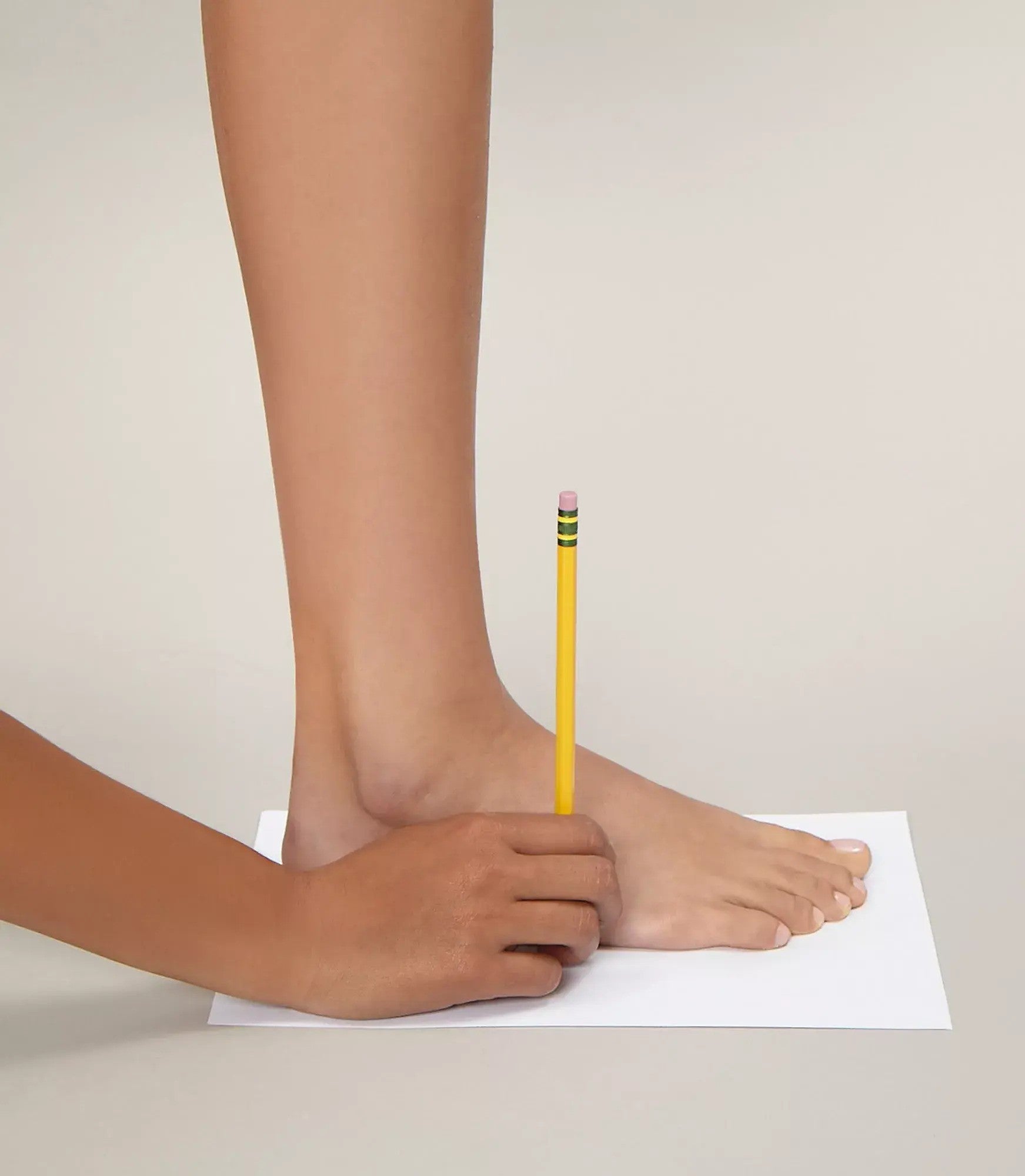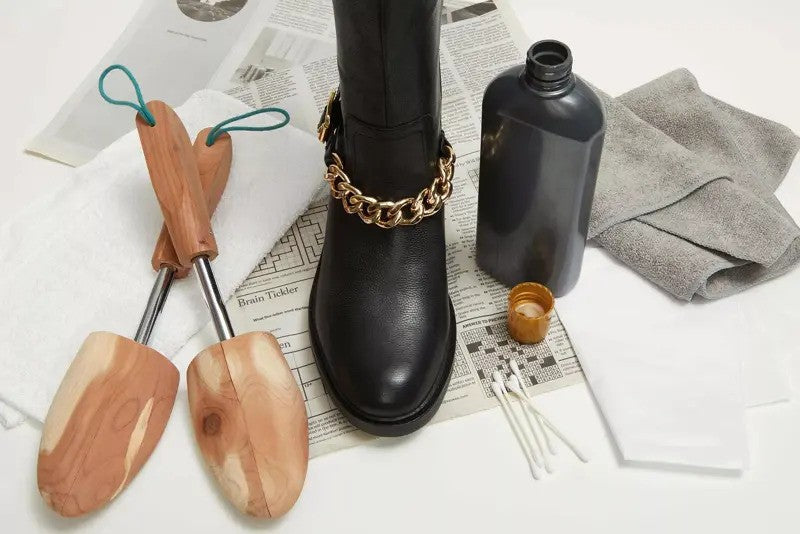Make Every Day Earth Day
Our Guide to Responsible Fashion Consumption

There’s no denying the fashion industry’s massive environmental impact, but you as the consumer can make a difference. Here are four ways to adjust your shoe-shopping habits, and make less of an environmental impact:
1. Reevaluate
With the rise of affordable fast fashion, we’ve come to see clothing and footwear as disposable. The result? Literal tons of waste incinerated or dumped into landfills. The most immediate fix? Making more mindful purchases.

Shop your closet. Assess what you have to make sure you’re not buying something you already own. Determine your favorite looks to ensure you’re adding a style that works with, elevates and updates what you wear.
Read labels. Sustainable sourcing and manufacture should inform your purchasing decisions. Choose products made in regions with stricter environmental standards, like the US, Canada and Europe.
Consider packaging. Weigh packaging and shipping methods and go for the less-wasteful option when possible. Or shop locally and support a small business with your well-considered purchase.
Buy better. Look for premium materials, quality construction and timeless style that will endure season after season. Check out Invincible Classics for durable pieces you’ll wear now and love forever.
Check out Invincible Classics for durable pieces you’ll wear now and love forever.


2. Rewear
Think of your shoe purchase as a long-term commitment. Will you wear it 50 times? If it’s not a style or color you’ll wear on repeat, save your money and precious closet real estate.

Choose versatility over novelty. Footwear that works with a variety of looks will get more wear. “We design our shoes with versatility in mind,” says Jorge Gomez, Vice President/Creative Director of Design for Vince Camuto Men’s. “You can wear them dressed up with business attire, but they’re also casual enough to wear with denim.”
Look for premium leather. “Our shoes are made with high-quality leathers, like hand-antiqued cow-crust leather,” continues Gomez. “It’s hand-finished to rich, warm tones by artisans and develops a beautiful patina with age.”
Prepare for wear. Prep footwear for regular, repeated use by adding non-skid rubber soles. Weatherproofing adds another element of wear-forever protection.
Handle with care. Maintenance is vital to keeping your well-loved footwear looking fresh. Regular cleaning, polishing and conditioning extends the beauty as well as the life of your shoe, ensuring years of stylish service.
Store properly. Treat all footwear like special-occasion styles. Once clean and dry, place your shoes in dust bags and stow in their original boxes. Use wooden shoe trees or crumpled newspaper to combat creasing and preserve the shape of shoes and boots.
Switch things up. With constant use comes inevitable wear and tear, so rotate your go-to styles.
3. Repair
A shoe care professional can dramatically extend the life of your footwear and make adjustments for a comfortable, customized fit.

Common Cobbler Fixes
- Tight shoes. Are those sultry stilettos pinching your toes? A shoe-care pro can stretch footwear in key places or expand shoes up to half a size overall.
- Heel slippage. Loose heel counters can be narrowed with cushioned grips that keep feet in place and reduce chaffing.
- Damaged heels. Your cobbler may suggest recovering or replacing broken, scraped or out-of-date heels.
- Dingy leather. Scuffed, faded or discolored leather can be reconditioned and/or dyed a darker color to correct or disguise blemishes.
- Inadequate straps. Have too-long straps tightened, too-short straps replaced, or add extra holes.
- Destroyed heel taps. Ask your cobbler to replace damaged heel taps before the actual heel makes any contact with the ground.
- Broken zippers. Pull tabs can be repaired or zippers replaced entirely.
- Worn toes. Walk a lot or have a heavier gait? Have toe taps installed on welted shoes to preserve leather soles.
- Ill-fitting tall boots. Too-tight or too-loose shafts can be stretched or streamlined for a better fit around your calves.
- Shabby footbeds. A skilled shoe-care pro can refurbish stained or overworn comfort-sandal footbeds.
4. Recycle
It happens: your quality footwear is in good shape but no longer vibes with your look or lifestyle. Here’s how to give your shoes a second life—and keep them out of a landfill.

Support microenterprise. Donate your gently worn shoes to Soles4Souls at your nearest DSW and provide footwear for people in need and sellable product for small businesses around the world.

Give to charity. Heels and other dressy styles are a boon for organizations committed to empowering women reentering the workforce. You can also give your serviceable items to thrift stores, many of which are associated with charities that administer relief by redistributing or reselling your goods.

Organize a fashion swap. Rehome your shoes with someone who’ll love them with new relationship energy. As an added bonus, you could score something new to you without negatively impacting the environment.
Trade up. Some stores offer a buy-back program where you can return your used items for store credit or a percentage off your next purchase. Your pre-worn items are then recycled, upcycled or resold at a discount.
Resell. Looking to recoup some cash? List your coveted or better-brand footwear on a social-media marketplace, resale website or at a consignment shop. Your pre-loved shoes stay in circulation, and you’ll spare the next owner the financial and environmental expense of buying new.
Making smart decisions about what we buy—and how we say goodbye—to our fashion and footwear can truly make a difference. With time and a little effort, you’ll become a more conscientious consumer and responsible fashion advocate without sacrificing your personal style.










